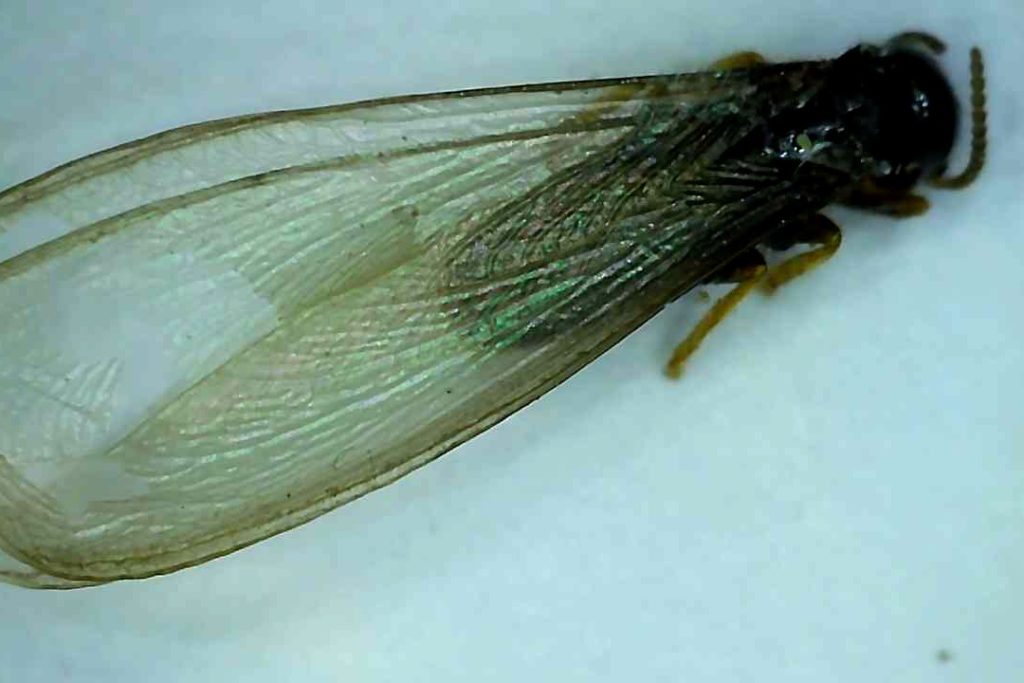While there are many pests that may damage our home, it seems that the most well known is the termite. The fear of termites is most likely the key driver behind the numerous inquiries we receive asking if a particular insect is a termite. We also get a lot of questions about whether something is termite damage. There are a few things commonly confused with termites. So what looks like termites but isn’t?
Carpenter Ant
The insect most often confused with termites is the carpenter ant. This is especially true during swarming seasons. Both termites and ants will grow wings and fly off to set up shop in a new place. The key differentiators between ants and termites are:
- ants have elbowed antennae; termite’s antennas are curved
- ants have 3 distinct body segments; termites look like 2
- ants have wings of different lengths; termite wings are equal



Springtails
The springtail can be quite difficult to distinguish from termites. These bouncy insects are going to be in moist areas so they may be in soft, damp, rotting wood that may look like termite damage. Some key points in considering springtails vs termites are:
- springtails vary in size so there are certain species that will overlap closely with termites
- springtails antennae will vary from species to species but can look quite similar to termites
- springtail heads are typically smaller than the body width; termites are typically larger
- springtail abdomens come to a point and have a tail-like mechanism they use to jump. Sometimes this will be folded under their body. Termites have more of a rounded abdomen
- subterranean termites will have mud tubes protecting their travel areas; springtails will not.
- the damage to the wood will be less clear-cut than termite damage since it will be related to rot

Psocids
Similar to springtails, psocids are going to be found in damp and moist areas that may include rotting wood. They are feeding on the fungus that is damaging the wood while termites feed on the wood itself. The key distinguishers are:
- psocids are smaller than termites
- both psocids (depending on species) and termites may have wings
- The psocid thorax is more distinguished than the termite’s
- psocids will not construct mud tubes
- the damage to the wood will be less clear-cut than termite damage since it will be related to rot


When in Doubt
Identification can be a frustrating and confusing process. Even as an associate certified entomologist, I run into situations that can be difficult and require a lot of work with microscopes, microscopes, and scouring pages of reference material. Keep in mind that our insect identification experts here at Rove Pest Control love to help. Reach out to us with your inquiries, and we will provide you with the solution or peace of mind that is needed.
